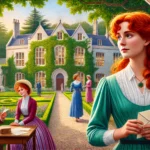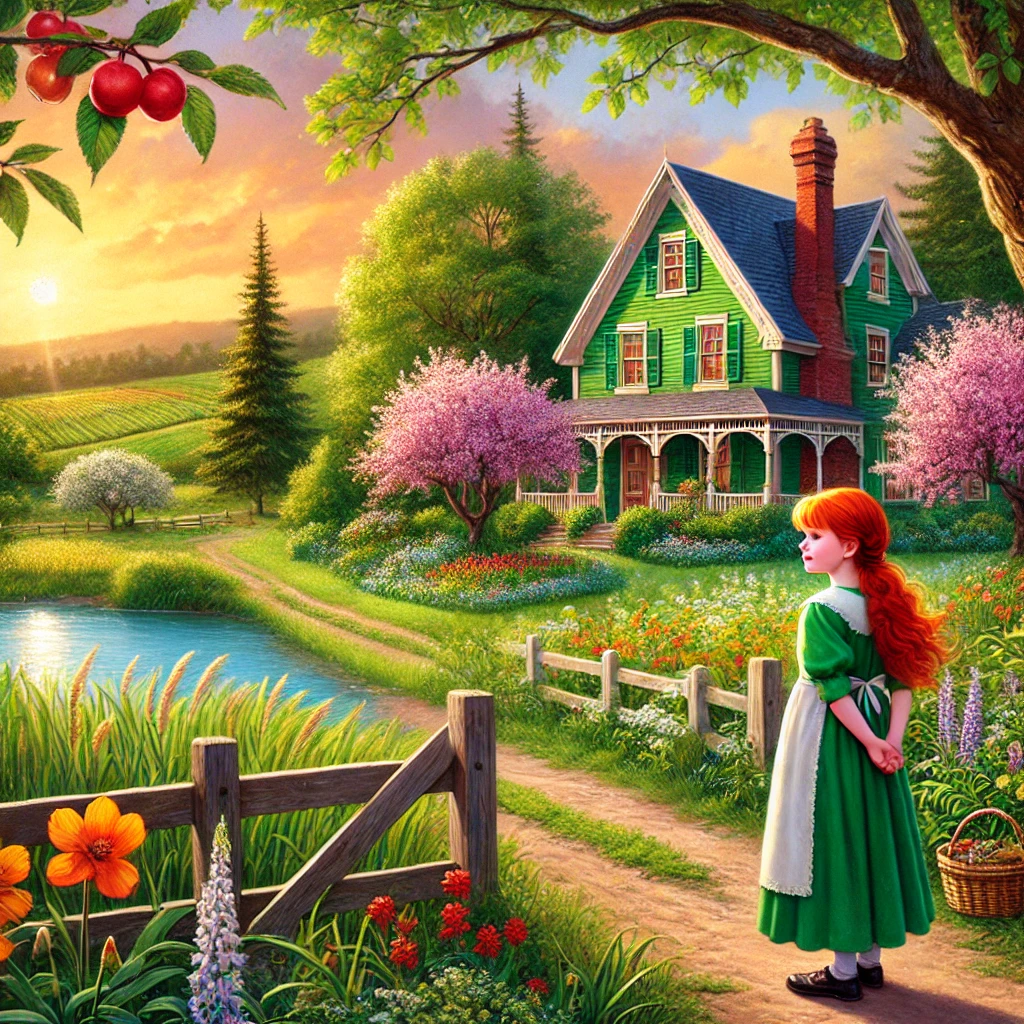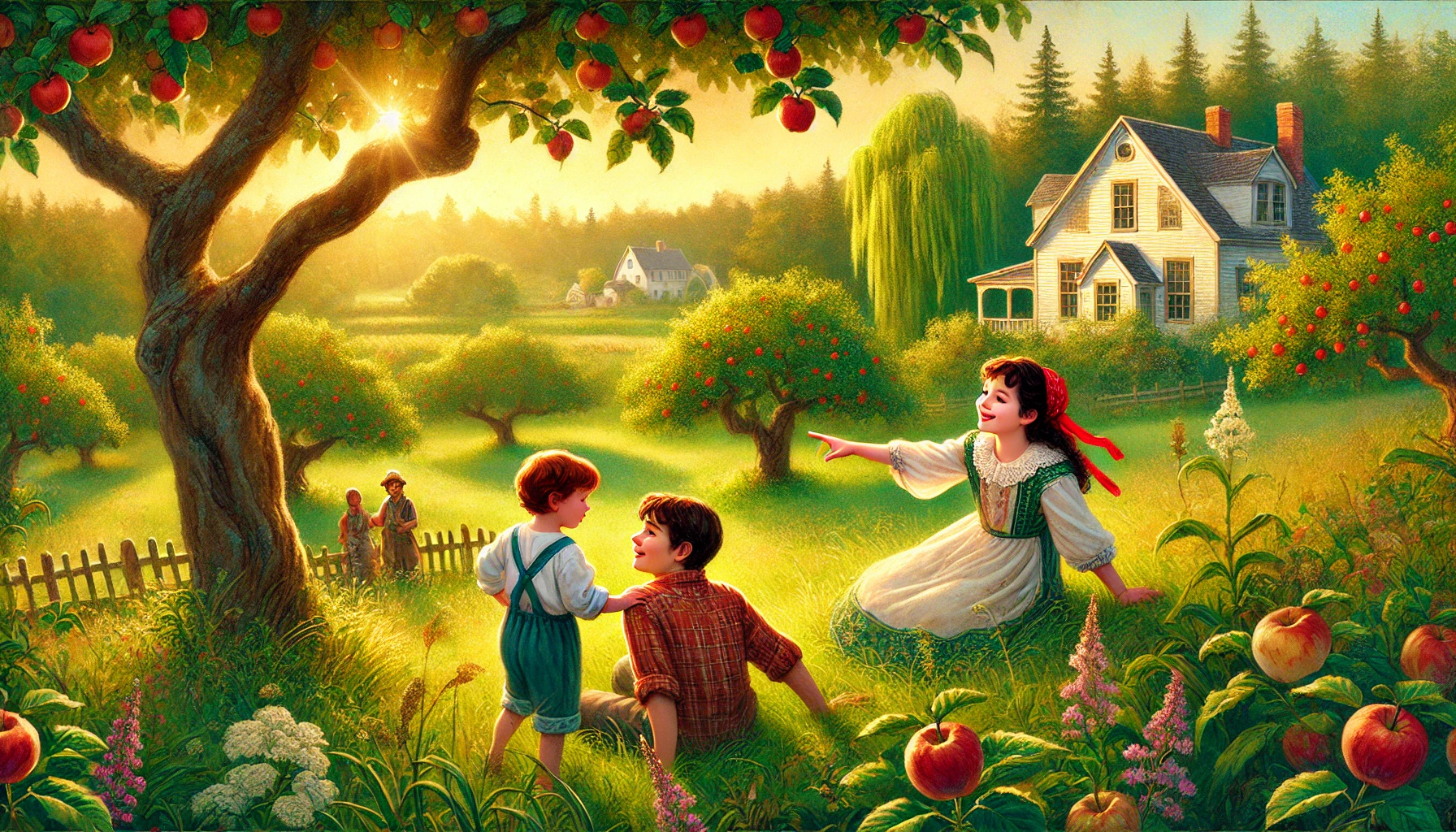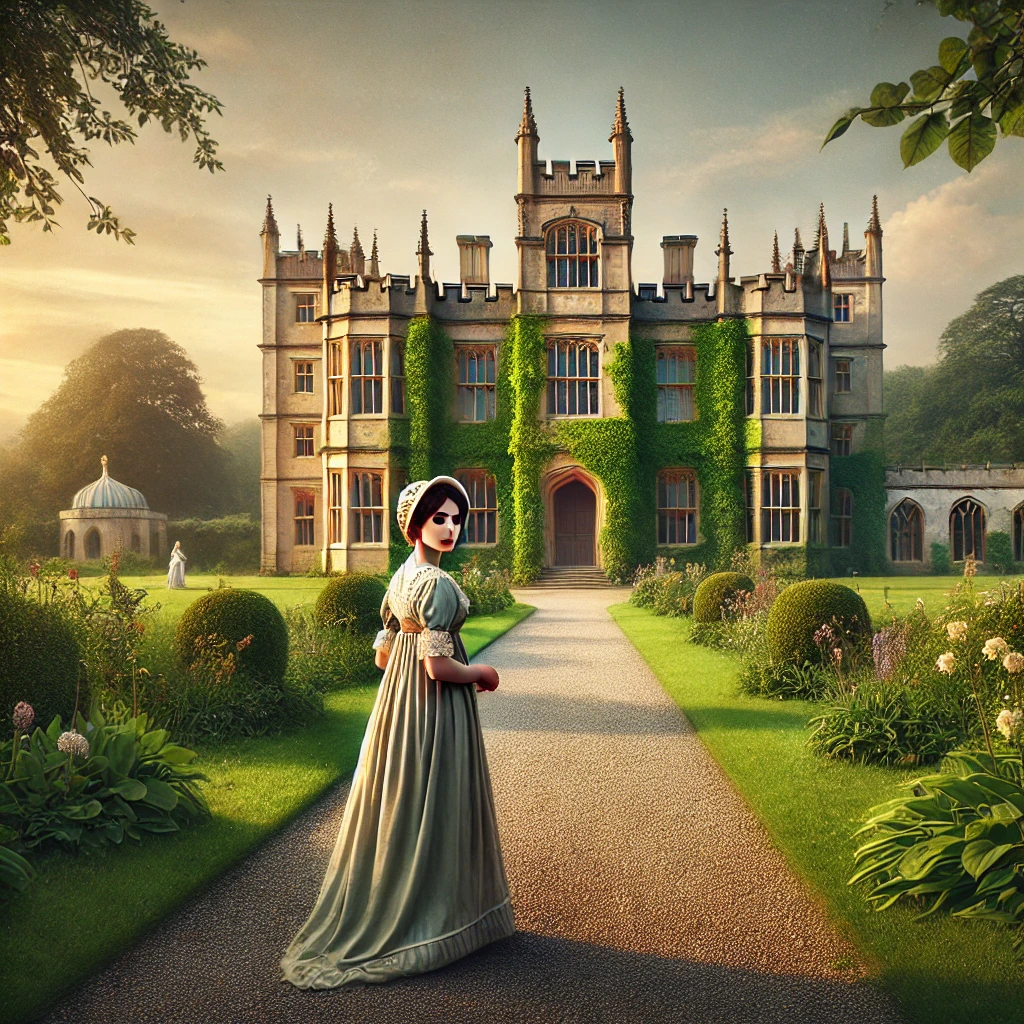Anne of Windy Poplars, written by Lucy Maud Montgomery and published in 1936, is the fourth book in the beloved Anne of Green Gables series. Set between Anne Shirley’s engagement to Gilbert Blythe and their eventual marriage, this epistolary novel primarily unfolds through Anne’s letters to Gilbert. The story captures her experiences during her three years as the principal of Summerside High School, where she faces new challenges and encounters quirky, memorable characters.
Plot Summary
Anne Shirley arrived in Summerside, excited to start her new role as the principal of Summerside High School. She had recently become engaged to Gilbert Blythe, and their future together seemed bright. For the next three years, Anne would be separated from him, as he pursued his medical studies. She settled into Windy Poplars, a charming house on Spook’s Lane, where she was greeted by its eccentric inhabitants—two widows, Aunt Kate and Aunt Chatty, and their sharp-tongued housekeeper, Rebecca Dew.
Anne immediately felt a sense of magic at Windy Poplars. The house, surrounded by aspen poplars and tucked away from the bustle of the town, had a comforting air that reminded her of Green Gables. It didn’t take long for her to befriend the widows, who adored her from the beginning. Rebecca Dew, though prickly, softened under Anne’s warmth, and even Dusty Miller, the house cat Rebecca loathed, quickly took a liking to her. However, as she prepared to meet her students and take on her duties at Summerside High, Anne soon learned that winning over the town would be far from easy.
Summerside was ruled by the Pringle family, a formidable and influential clan known as the “Royal Family.” They were displeased that Anne had been appointed principal over one of their own relatives. Leading the opposition was Jen Pringle, a clever and mischievous student determined to undermine Anne’s authority. Anne quickly sensed Jen’s hostility and soon discovered that many of her students—those connected to the Pringle clan—would be difficult to manage.
Determined to overcome the Pringle resistance, Anne faced numerous small trials. The students played pranks on her, snuck notes in class, and whispered behind her back. But despite their efforts to unsettle her, Anne maintained her grace and sense of humor. She tackled the insubordination with a mix of patience and wit, determined to remain kind-hearted in the face of adversity.
Outside of school, Anne built meaningful connections with the quirky residents of Summerside. Her letters to Gilbert brimmed with tales of the people she encountered, from the gossiping Mrs. Braddock to the mysterious inhabitants of The Evergreens, the grand estate next door to Windy Poplars. Among these neighbors was little Elizabeth Grayson, a lonely, dreamy child who lived under the strict care of her grandmother and a harsh maid. Elizabeth’s life was quiet and controlled, and she spent much of her time lost in her imagination. She believed that one day, “Tomorrow” would arrive, bringing her freedom and happiness. Anne, recognizing something of her own youthful self in Elizabeth, set out to befriend the girl. Over time, she taught Elizabeth the joy of laughter and encouraged her to dream even bigger.
The Pringles, however, were not as easy to charm. Anne’s struggles with the family continued, and the townspeople, wary of crossing the Pringles, kept their distance from her. Yet Anne was not one to give up. She refused to let the coldness of a few people sour her experience in Summerside. Bit by bit, her kindness and resilience began to melt the icy barrier the Pringles had built around themselves.
One of the pivotal moments in her battle with the Pringles came when she was invited to Maplehurst, the grand Pringle estate, for dinner with Miss Ellen and Miss Sarah Pringle. Despite the initial discomfort of being in the lion’s den, Anne’s grace and charm shone through. She began to understand the deeper complexities of the family—its pride and history—and the loneliness that underpinned their rigid social structure. While she didn’t win their full approval, the ice began to crack. Slowly, even Jen Pringle’s attitude shifted, as she began to admire Anne’s integrity and spirit.
Amid these struggles, Anne found joy in her surroundings. Windy Poplars became a true sanctuary for her, where the winds played among the poplars, and the peaceful evenings allowed her time for reflection. She came to love the town’s rhythms, the quirks of its people, and the friendships that deepened with each passing season.
As the years went on, Anne’s persistence paid off. Gradually, the people of Summerside warmed to her, including some members of the Pringle clan. Jen Pringle, who had been her fiercest adversary, slowly came to respect Anne, and by the time Anne’s tenure was nearing its end, the rebellious student was no longer an enemy but a reluctant ally. Other students, inspired by Anne’s teaching and nurturing nature, blossomed under her care. The townspeople, too, began to embrace her, realizing that Anne’s warmth and kindness could not be ignored.
Through it all, Anne’s letters to Gilbert were filled with reflections on her experiences—her triumphs, her frustrations, and her small victories. Windy Poplars had become a place of growth and learning for her, just as much as it was for her students. And though she longed for the day when she would be reunited with Gilbert and begin their life together, Anne cherished the years spent in Summerside. She had faced the challenge of living in a new town, battling social prejudice, and winning the hearts of a stubborn community, all while staying true to herself.
As her time at Summerside came to a close, Anne looked forward to her future with a full heart. She had not only succeeded in her role as principal but had also made lifelong friends and left a lasting impact on those around her. Windy Poplars would forever hold a special place in her memories, a chapter of her life where she had once again proven that love, patience, and imagination could overcome even the most daunting obstacles.
Main Characters
Anne Shirley: As always, Anne’s vivid imagination and idealism shine through, but she has matured into a more self-assured young woman. Now working as a school principal, she confronts social challenges with both humor and grace, often dealing with prejudice from the influential Pringle family while befriending the eccentric residents of Windy Poplars.
Gilbert Blythe: Though largely absent from the physical setting of the novel, Gilbert remains a constant presence through Anne’s affectionate letters. He serves as her confidante and future husband, symbolizing stability and love in Anne’s life.
Rebecca Dew: The housekeeper at Windy Poplars, Rebecca is a no-nonsense, sharp-tongued woman with a soft heart. Though initially prickly, she becomes fond of Anne, and her humorous commentary adds warmth to the narrative.
Aunt Kate and Aunt Chatty: These two elderly women, Kate being the more stern and practical, and Chatty the gentle and sensitive one, own Windy Poplars. They provide Anne with a home during her tenure in Summerside, offering both comfort and comic relief through their unique personalities.
The Pringle Family: The Pringles, known as the “Royal Family” of Summerside, are a powerful clan who initially oppose Anne due to her taking the principal position over one of their relatives. They provide the main source of conflict in the story, particularly Jen Pringle, a student who leads a subtle rebellion against Anne.
Theme
Resilience and Perseverance: Anne’s journey in Summerside is marked by her determination to win over a community that initially resists her. Her ability to maintain her optimism and her deep belief in kindness help her navigate social challenges, teaching readers the value of patience and persistence.
Community and Belonging: A recurring theme in the Anne series is the search for belonging, and in Anne of Windy Poplars, this manifests through Anne’s efforts to integrate into a town where the powerful Pringle family controls social dynamics. Her eventual acceptance highlights the importance of forging personal connections and the power of empathy.
Imagination and Escapism: Anne’s vibrant imagination serves as both her coping mechanism and her source of joy. Her whimsical descriptions of people and places, as well as her capacity to dream about possibilities, add depth to her character and make even the most mundane moments magical.
Social Class and Prejudice: The Pringles’ opposition to Anne is rooted in social elitism, offering a commentary on class divisions in small-town life. Anne’s eventual success in overcoming their prejudice emphasizes the strength of character over social standing.
Writing Style and Tone
Montgomery’s writing in Anne of Windy Poplars is rich with descriptive language, imbuing the story with a sense of place and character. Her signature style combines wit, warmth, and poetic flourishes, especially in the way she captures Anne’s imaginative perspective on the world. The letters are peppered with humor and playful commentary, showcasing Anne’s evolving maturity while maintaining her trademark zest for life.
The tone of the novel alternates between lighthearted and reflective, with moments of quiet introspection, particularly when Anne navigates her internal struggles with loneliness and the challenges posed by the Pringles. Despite the adversity she faces, the novel maintains an overall optimistic and heartwarming feel, as Anne’s resilience and positive outlook eventually triumph.
We hope this summary has sparked your interest and would appreciate you following Celsius 233 on social media:
There’s a treasure trove of other fascinating book summaries waiting for you. Check out our collection of stories that inspire, thrill, and provoke thought, just like this one by checking out the Book Shelf or the Library
Remember, while our summaries capture the essence, they can never replace the full experience of reading the book. If this summary intrigued you, consider diving into the complete story – buy the book and immerse yourself in the author’s original work.
If you want to request a book summary, click here.
When Saurabh is not working/watching football/reading books/traveling, you can reach him via Twitter/X, LinkedIn, or Threads
Restart reading!








